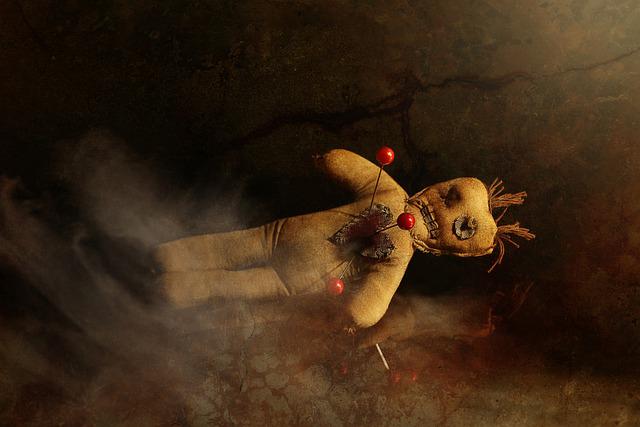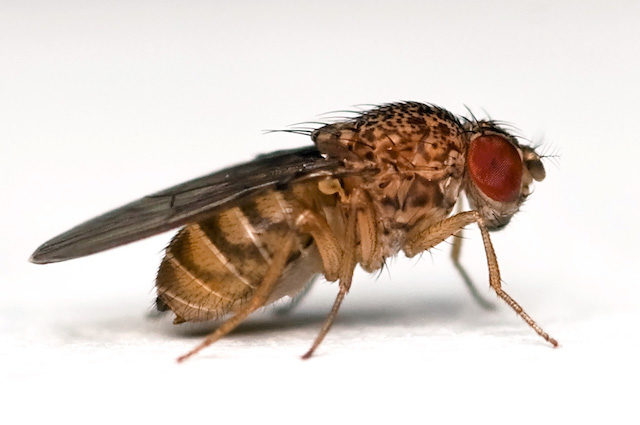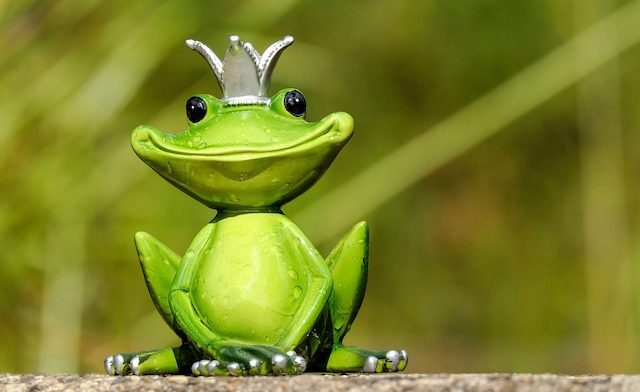When George Romero made Night of the Living Dead back in 1968, he set into motion a slow-moving, ravenous machine that would devour pop culture many years later. To hear most people tell it, the zombie genre has peaked and is now in the twilight of its relevance but with a solid stable of zombie movies still being produced every year and The Walking Dead universe branching into numerous spin offs it, like its antagonists, will never die. Nowhere is this more evident than in the world around us where anything and everything that even remotely plays with the same tropes is immediately labeled a zombie.
10. Bath Salt Zombies
The year 2012 was such an innocent time. The first Avengers movie was in theaters, Barack Obama was President, and the media was pretty sure drug addicted zombies were eating faces on the freeway. Thus began the rise of the infamous bath salts zombies.
In May 2012, a nude man attacked another man on the freeway in Miami. The attack was filmed and occurred in broad daylight. The attacker, Rudy Eugene, bit his victim’s face almost completely off, as in right down to the bone. Police had to shoot him four times. Reports of the incident also immediately linked it to a relatively new and unheard of drug called bath salts. Officials said it made users go insane, overheat, and display incredible violence and increased physical strength. Other stories popped up as well, though not nearly as gruesome as the original. For all intents and purposes, they were describing a drug that turned you into a zombie.
Remarkably, when the toxicology report came out a short time later, there was no evidence at all of bath salts in Eugene’s system, just marijuana. Not that they necessarily blamed marijuana, they just couldn’t figure it out. By the end of 2012, the stories vanished and bath salts had basically faded to obscurity.
9. Ophiocordyceps Zombie Fungus
The average person is probably not overly familiar with fungus species. Beyond the mushrooms we eat, most other kinds are pretty unknown simply because most of us have no reason to ever need to know about them. But there is one small exception and that’s when it comes to cordyceps. Thanks to the popular game series The Last of Us, cordyceps fungus became a pop culture phenomenon, though it didn’t start in the game by any means. The game just capitalized on an idea people couldn’t resist – fungal zombies.
Ophiocordyceps was something of a darling of internet media and pop culture as articles popped up to explain how the bizarre life form worked, including profiles in the New York Times and the Atlantic. If you missed the initial blast of articles, basically the fungus infects insects like ants. A fungal spore gets inside the ant and begins to grow. The ant continues its business but the fungus will consume as much of the insect’s insides as it can without killing it. Then, when it has grown enough, the fungus can project itself into the ant’s head and its appendages. It will use the ant’s legs, kind of like a puppet master, and force it to climb to a high point on a blade of grass or something similar. Once it’s in a good position, the fungus glues the ant in place and explodes out of its head. New spores are released to fall down where other ants can get infected.
The zombie parallels are pretty clear since the fungus effectively kills but keeps using the ant and, of course, it infects others from the inside out. Fortunately, it’s not complex enough to do the same thing to humans, at least as far as we know.
8. Haitian Voodoo Zombies

Before George Romero introduced us to the dead who walk, there were some other zombie movies out in the world. Arguably “White Zombie” from 1932 was the most famous of these and featured Bela Lugosi as a Haitian voodoo master which made sense to audiences in 1932. In that movie, it is nefarious spell casting that makes a zombie and when the antagonist is defeated, his zombie is roused from their trance.
There’s a distinction between a Romero zombie and what some would call a voodoo zombie, one that even Romero understood. In fact, he didn’t use the word “zombie” in his first movie because he felt he’d created ghouls and zombies were the things from voodoo belief. In that system, a boko or bokor, a practitioner of voodoo magic, can separate the soul from the body to create a zombie. This is not a flesh-hungry monster but more of an automaton, an unliving slave that does the bidding of the bokor and can even be used for good.
In 1983, ethnobotanist Wade Davis claimed to have found the scientific explanation for voodoo zombies, leaving the magical explanation behind in favor of a toxicological one. His work was later criticized for being unscientific which perhaps created even more mystery around the idea of just what a voodoo zombie might be and if there was any truth to them.
7. Zombie Pigs

Depending on your worldview, the idea of a zombie pig either sounds amazing or absolutely terrifying. The truth of the zombie pig is a little less horror than the name implies but does have some interesting scientific ramifications.
In the real story behind the headline, researchers managed to restore limited brain function in dead pigs. The pigs were sourced from a slaughterhouse and had been dead for hours. But a team, working to understand how human brain death worked, towards the goal of hopefully reversing it, managed to take those technically dead brains, and restore some cellular function. The pigs didn’t return to life, they literally didn’t have bodies, but it presented a significant find in the understanding of how death affects a brain and what could potentially be done to save human life in the future.
Fast forward three years and the same researchers were restoring cellular function in dead pigs, a further step in their efforts to push the limits of death’s finality. Again, no undead pigs got up and walked around, But the potential for organs and other tissue to be preserved well beyond what we previously considered death could have great potential for saving lives and organ transplants down the road.
6. Zombie Flies

We’ve heard for some years that honeybee populations are in danger but the culprit isn’t always clearly identified. Climate change, pesticides, and other things have been brought up. But so have zombie flies.
These flies lay their eggs inside host insects, in this case honeybees, and the larvae develop inside the host, killing it in the process. The flies had been observed killing wasps and even bumblebees this way, but it wasn’t observed in honeybees until 2012. The fact they had never been seen in honeybees before was actually shocking since honeybees are very well studied. Even more surprising, when they were discovered and then researchers went looking, they found the parasites in 77% of the hives in California’s Bay area.
The parasites cause the bees to leave their nests and then fly aimlessly until they die and the maggots then crawl out.
5. Zombie Fly/Zombie Fungus Combo

We’ve seen zombie flies and zombie fungus, now meet the zombie fly fungus. It’s the worst of both worlds. Like the cordyceps fungus, spores can infect a host which in this case is a fly. The fungus spreads inside the host and then takes control of its body, forcing it to a high point where it will die. So far, so familiar. But somehow it gets so much worse.
Once dead, the fungus releases chemical signals that attract males. These chemicals act like irresistible pheromones and lure males to mate. The unsuspecting males then breed with the very dead, very fungus-infected corpse. During the process, the living male becomes infected with spores and then the process repeats itself.
For an extra disturbing twist, the longer the fly has been dead, the more attractive it seems to become to males thanks to more seductive spores being produced.
4. Zombie Taxa

If you’re a fan of paleontology, then you may be familiar with zombie taxa. This is a tricky sort of fossil phenomena that can dupe a scientist into thinking they’ve discovered something dead living where it had no business living.
For zombie fossils to work, what happens is something dies and gets fossilized. So far, so normal. That fossil then gets transferred via erosion or some similar process to some place new, much later in time and then basically re-fossilizes. If it’s discovered and what happened isn’t clear, then you can find a T-rex fossil in the remains of an ancient Roman city, for example, and be utterly confused. That’s an extreme example which never really happened, but there have been cases when dinosaur teeth have been discovered in fossils dated from well past the extinction of those creatures.
3. Zombie Storms

A zombie storm is a term you won’t hear your local meteorologist mention all that often but if they ever do, pay attention. Typically, big storms follow a pattern of growing in size to something large, like a tropical storm, and then dying out over time as they become weaker and weaker. A zombie storm does what the name implies and comes back from the dead. A once dead storm grows strong and becomes a tropical storm again.
The National Weather Service seems to have coined the term in 2020 in response to Hurricane Paulette which looked to be on the verge of dying before picking up steam again and becoming a tropical storm once more. The phenomenon is rare, but there have been a few other recorded instances of it.
2. Zombie Deer

If part of what you associate with zombies includes wasting away and shambling about without fear, then zombie deer make sense. These unfortunate creatures have actually been around for decades and are victims of a prion disease called chronic wasting disease, similar to mad cow. The condition may take years to fully manifest but causes severe weight loss, aggression, a lack of coordination, drooling and a lack of fear. So all the potential hallmarks of the walking dead, minus a desire to eat people.
The disease is always fatal, and it’s also highly contagious. It exists across numerous states and into Canada as well as overseas, so efforts to fight it aren’t going that well.
1. Zombie Frogs

By now we’ve seen that the media is quick to call anything that seems like it should be dead but isn’t a zombie. This is definitely the case with zombie frogs. But in a fun twist, there are two completely different zombie frogs and they got their names for two completely different reasons.
First up is the one that seems a little easier to understand. Have you ever wondered where frogs in the northern hemisphere go in the winter when the world freezes? Well, they freeze with it. Species like wood frogs and some toads are adapted to freezing winters by freezing right along with everything else. Not metaphorically either, as actual ice crystals form inside the frog’s body. Their hearts stop and they no longer breathe. But as long as their internal organs do not freeze, which doesn’t happen because they can turn their blood into a kind of antifreeze, they will be able to thaw when spring comes and go back to living their lives.
Much further south in the Amazon exists another zombie frog, a tiny fellow with a curiously pointed nose. And why is this one a zombie? It’s a little less impressive than you’d think. They were named by a German herpetologist who noted that, as his colleagues dug through the mud on their hands and knees looking for the frogs, they resembled zombies. Go figure.